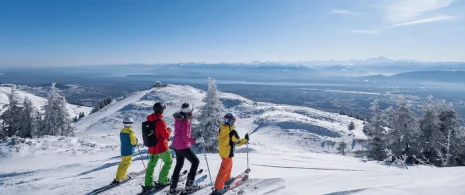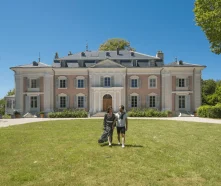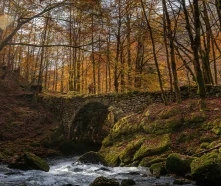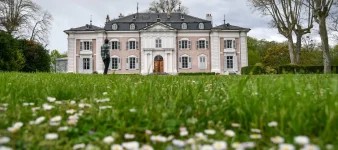(1) Start at Place de la Mairie. Head towards Place du Poizat via Rue de Confignon. Once at the square, locate fountain no. 1 (private).
(2) Continue along Rue Saint-Maurice until you reach no. 99. On the left, you will find fountain no. 2 (private). Then turn right down Ruelle des Fontaines and look for fountain no. 3 (private).
👉 On the left, as you go down, you will see the aqueduct passage.
(3) At the bottom of the alley, on the left, is the communal fountain of Les Fontanettes no. 4. Go up Rue des Fontanettes. At the entrance to Place du Poizat, at the no entry sign, you will see fountain no. 5 (private).
(4) Turn left onto Rue du Château. At the intersection with Rue de la Fruitière, you will find communal fountain no. 6. Continue downhill towards the Château de Challex, in front of which is fountain no. 7 (private).
(5) Then go back up Route de la Plaine towards the village to the old dairy. Turn left onto Rue de Champ Novaz and admire communal fountain no. 8.
(6) Continue uphill on Rue de Champ Novaz, then turn left onto Rue de la Treille towards the school. Pass in front of the school and continue towards the hamlet of Mucelle.
(7) At the entrance to Mucelle, at Abbé Tissot’s reservoir, take Chemin des Sources. Follow the path to Mucelle communal fountain no. 9.
(8) Continue along the country lane to the pump house. Finally, turn right onto the Pré Rachet lane to return to the village.
A fun and accessible route for the whole family, exploring fountains and small heritage sites. Between narrow streets, secret passages and hamlets, this walk combines local history and conviviality.
Guidebook with maps/step-by-step
Along this route, you will walk from fountain to fountain, discreet witnesses to life in times gone by. Some are communal, others private, but all remind us of the importance of water in the organisation of the village. This route also allows you to encounter elements of rural heritage such as the old dairy, Abbé Tissot's reservoir and the pump house. Between built heritage and countryside landscapes, this walk invites you to take a closer look at local history and the know-how passed down over time.






